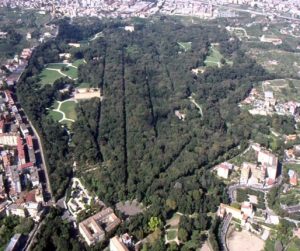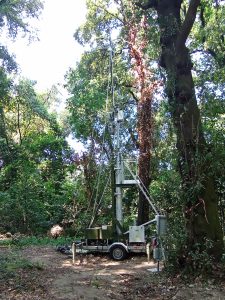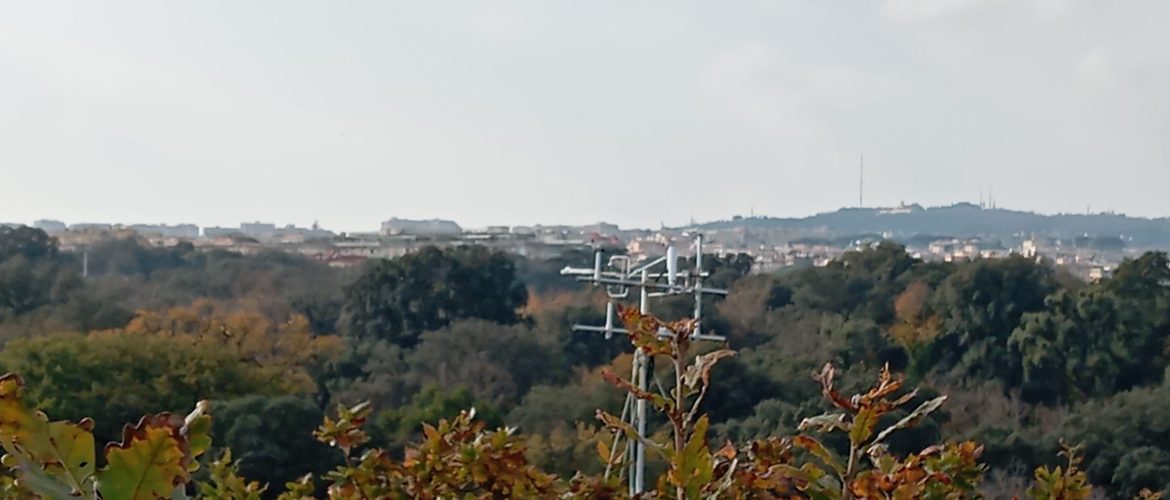A new operational phase has begun for the Real Bosco di Capodimonte site, an integral part of the ICOS (Integrated Carbon Observation System) infrastructure. Thanks to technological upgrades, environmental data acquisition activities have resumed.
The Principal Investigator of the station is the National Research Council’s Institute of Research on Terrestrial Ecosystems (CNR-IRET), which recently published a study in the journal Urban Climate on the role of urban green areas in carbon sequestration and heatwave mitigation.

The Capodimonte monitoring station, part of the ICOS infrastructure, has entered a new operational phase thanks to state-of-the-art technology installed on its 30-meter-high monitoring tower. This significant upgrade, supported by the MUR-funded PRO–ICOS_MED project, marks a turning point in the station’s ability to collect high-quality environmental data, following ICOS European infrastructure protocols.
The new instrumentation includes a sonic anemometer, a CO2 and H2O concentration analyzer utilizing the eddy covariance technique, and sensors for comprehensive monitoring of air (e.g., solar radiation, temperature, humidity, photosynthetically active radiation) and soil parameters (e.g., water content, temperature, heat fluxes).
The European ICOS research infrastructure is an environmental monitoring system comprising over 150 stations across 13 European countries. The Capodimonte station is coordinated by CNR-IRET, ensuring rigorous data collection and adherence to European scientific standards.
Scientific Significance and Institutional Support
“The monitoring station within the Real Bosco di Capodimonte provides crucial data demonstrating the importance of the park for Naples’ environmental quality,” says Carlo Calfapietra, Director of CNR-IRET, ICOS Italy Focal Point, and Principal Investigator of the station. “Our close collaboration with the park’s management ensures we maintain high scientific standards while preserving the cultural and natural heritage of the site.”
Eike Schmidt, Director of the Museum and Real Bosco di Capodimonte, states, “Capodimonte is Naples’ green lung. It is not only a major museum within one of Italy’s largest urban parks but also an ecologically significant site serving the city. The relaunch and enhancement of the monitoring station, which focuses on key climate change topics, position the Museum and Real Bosco as a center for environmental and naturalistic research. Thanks to CNR-IRET’s project, the park continues its mission as a place for well-being, health, and scientific study.”
Research and Environmental Impact

The Real Bosco di Capodimonte is both a natural and historical treasure, hosting a protected area under the supervision of the Carabinieri Command for Biodiversity and Park Protection in Naples. This ensures the park’s safety, biodiversity conservation, and protection of one of the region’s most valuable green spaces.
Since 2015, the monitoring station has been collecting essential data on the urban environment and its relationship with climate change. A recent study published in 2025 in Urban Climate—conducted by CNR-IRET in collaboration with EURAC Research (Bolzano) and the Department of Environmental Resources Engineering at Syracuse University (USA)—analyzed the role of urban green spaces in carbon sequestration and heatwave mitigation. These environmental services are linked to Nature-Based Solutions (NbS), which leverage the “cooling potential” of vegetation.
“The study provides key insights into the limitations of vegetation in adverse climatic conditions and highlights the critical role of water in sustaining ecosystem services such as cooling and carbon sequestration,” explains Terenzio Zenone, CNR-IRET researcher and co-author of the study. “Vegetated areas recorded air temperatures approximately 3°C lower than urban zones during dry periods and around 9°C lower when water availability was sufficient. Experimental observations have also underscored the importance of targeted water resource management.”
The study’s authors recommend selecting drought-tolerant plant species to ensure the resilience of urban green spaces under future climatic conditions. Additionally, they advocate integrating green and blue infrastructure—such as rain gardens—to improve water management and enhance vegetation’s cooling capacity. Finally, they propose developing targeted irrigation plans during drought periods to maximize the climatic and social benefits of urban green areas.
“Our publication,” concludes Zenone, “was made possible through the cooperation of multiple institutions. The increasing frequency of heatwaves and their documented negative effects on public health call for further research into the relationship between green spaces, heatwaves, and physical/mental well-being. A multidimensional approach to urban green planning is essential.”
Key Information
The urban park of the Real Bosco di Capodimonte, the focus of this study, spans approximately 134 hectares on a breezy hill overlooking the Gulf of Naples. It holds historical, cultural, and ecological significance. The study area has a Mediterranean climate and features vegetation typical of the Mediterranean maquis, dominated by Quercus ilex. The park is home to over 400 plant species, making it a vital green resource for Naples. Its vastness and biodiversity attract both residents and tourists.
ICOS is a European research infrastructure dedicated to obtaining high-precision measurements of greenhouse gas concentrations in the atmosphere, oceans, and terrestrial ecosystems. Its data support policymakers in developing strategies to mitigate climate change and its impacts. The infrastructure consists of multiple station networks across 16 European countries, totaling over 170 stations and involving hundreds of scientists and researchers. The Italian network currently comprises 25 stations, including 15 ecosystem stations, 5 oceanic stations, and 5 atmospheric stations. As an associated site, the Capodimonte station continuously monitors greenhouse gas fluxes, environmental parameters, and soil characteristics to better understand urban vegetation gas exchanges.
Publication and Contact Details
Publication: Impact of drought on cooling capacity and carbon sequestration in urban green areas
DOI: https://doi.org/10.1016/j.uclim.2024.102244
External Links:
- Capodimonte Station
- Real Bosco di Capodimonte
- ICOS Italy
Press Office – CNR IRET:
- Valentina Di Paola (valentina.dipaola@iret.cnr.it), +39 3937163981
- Lucia Cherubini (lucia.cherubini@cnr.it)
Scientific Contact:
National Research Council, Institute of Research on Terrestrial Ecosystems
- Terenzio Zenone (terenzio.zenone@cnr.it)


